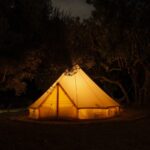Finding the Perfect Camping Tent: A Comprehensive Guide
Camping is an excellent way to enjoy outdoor activities while getting away from the hustle and bustle of daily life. Having a suitable camping tent is essential for a comfortable and enjoyable trip, whether you are an experienced camper or a new camper. With so many different types, sizes, and functions to choose from, it can be difficult to find the ideal camping tent.
In this comprehensive guide, we will teach you everything you need to know to find the best camping tent for your needs.
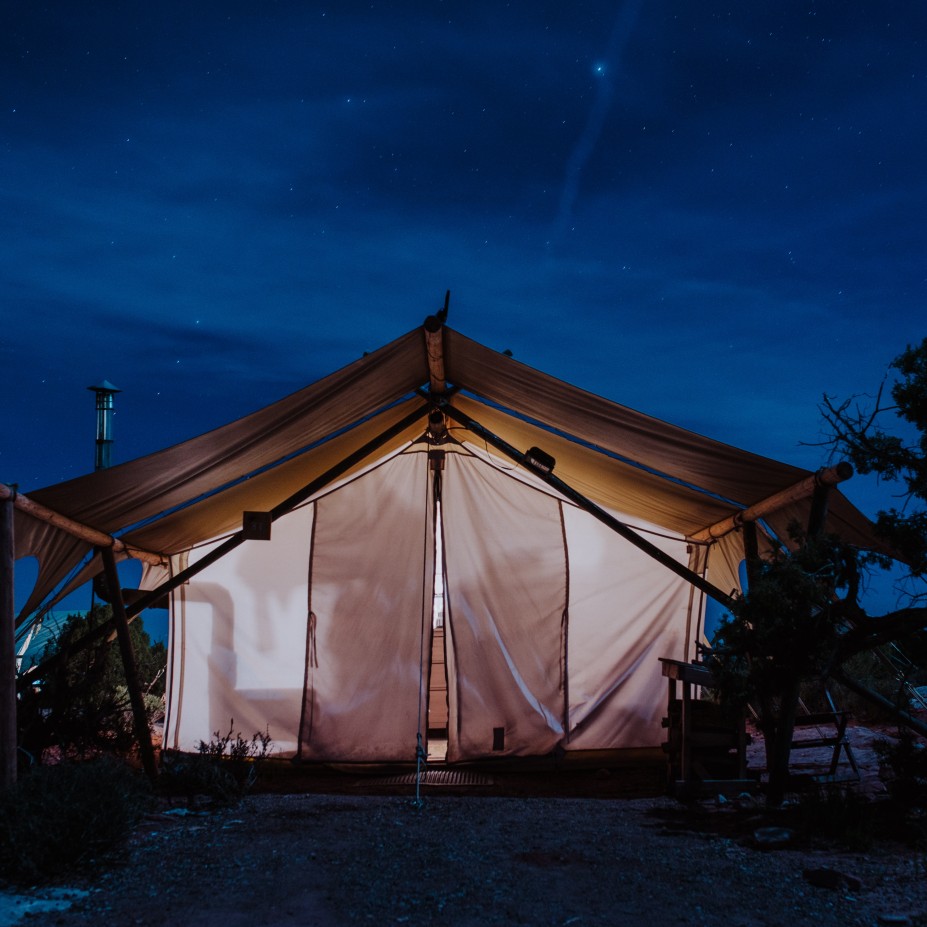
Choosing the best camping tent is essential for any outdoor adventure because it is the primary source of rain protection. An uncomfortable and unpleasant experience can result from an unsuitable tent, whereas the right tent can provide comfort and enjoyment.
To find the ideal tent, consider the number of people, the type of camping, and the weather conditions. A high-quality tent that meets your needs will not only provide a fun camping experience but will also save you money in the long run because it will last for years.
Finally, selecting the best camping tent is critical to having a successful camping trip and making unforgettable memories in the great outdoors.
The post is intended to provide every camper with a thorough understanding of how to select the best camping tent. This guide discusses tent types, materials used in tent construction, important features to consider, and tent sizes and shapes.
It also includes fundamental instructions for erecting and maintaining a tent. The guide’s goal is to assist readers in making an informed decision when purchasing the camping tent that best meets their needs, taking into consideration the type of camping trip and the weather conditions they are likely to encounter.
Overall, this guide is an excellent resource for improving your camping experience and ensuring a comfortable and enjoyable time in the wilderness.
Types of Tents
There are many different tent kinds to pick from, and each has pros and downsides of its own.
Lightweight and small, backpacking tents are ideal for camping and trekking. Family tents are roomy, with plenty of room for sleeping and storage, but they may be difficult and cumbersome to set up.
Four-season tents are perfect for winter camping since they can resist harsh weather conditions, but they are often more costly and less breathable.
Finding the right kind of tent for your trip requires careful consideration of your camping demands, the number of guests, and the weather.
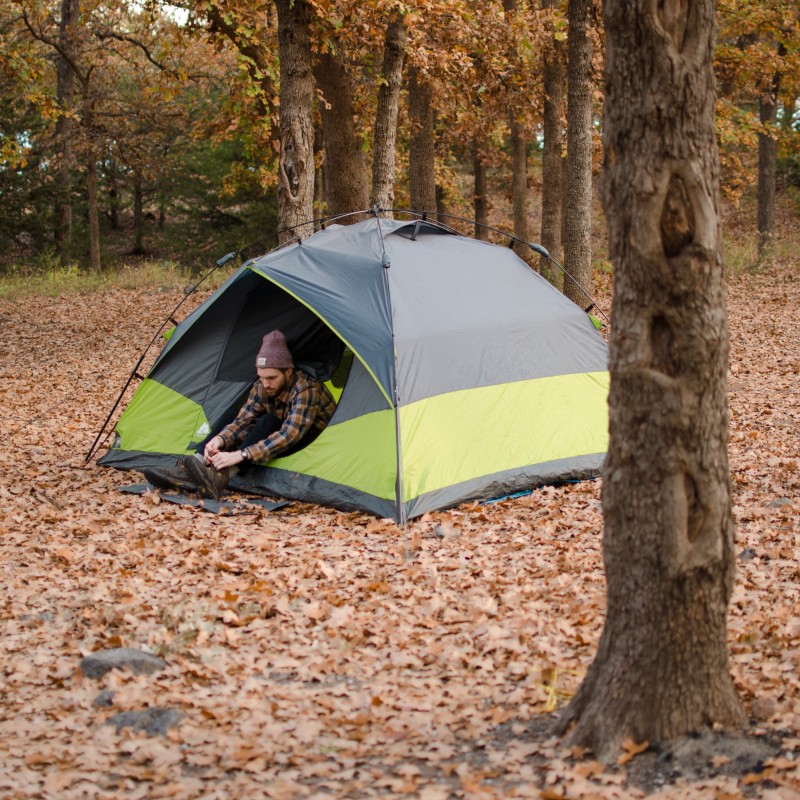
Backpacking Tents
A backpacking tent is a tent that is small enough to fit in a backpack. Tents that fold up are synonymous. The tent can be folded up.
A mobile shelter (usually covered with canvas on support poles and secured to the ground with ropes and pegs).
These are backpacking tents that are lightweight and compact. They are made of long-lasting, lightweight materials and come in a variety of styles that can accommodate one to two people.
These tents are ideal for outdoor enthusiasts who want to keep their gear light and portable. Regular backpacking tents have an abundance of mesh fabric patchwork to improve air circulation and keep insects out, as well as fewer poles and lighter fabric to reduce weight.
Family Tents
Family tents are ideal for groups of friends or families who want to camp together. They are available in a variety of sizes and styles, with plenty of sleeping, storage, and living space.
These tents have multiple rooms, windows, and ventilation systems and are made of tough, high-quality waterproof fabric. Family tents are very comfortable.
Awnings are commonly used in family-style tents to provide additional living space. Poles or air tubes are included with family tents.
They are an excellent choice for those who want to camp with their loved ones/friends in a comfortable and spacious living area.
Four-Season Tents
Four-season tents are designed for extreme weather conditions and can withstand heavy snow, high winds and bitter cold. They are ideal for winter camping trips and mountaineering expeditions.
To provide better protection and insulation against inclement weather, Four Seasons tents are constructed with stronger, more durable materials such as heavier poles, thicker fabric, and a waterproof coating.
They also have extra features like a doorway for storing equipment and a ventilation system to prevent condensation.
When selecting an all-season tent, consider factors such as weight, size, and ease of installation, as well as the type of weather you will encounter.
Comparison of benefits and drawbacks
When selecting a camping tent, consider the benefits and drawbacks of each type.
Backpacking tents, for example, are lightweight and portable, making them ideal for hikers and campers who must transport their equipment over long distances.
When compared to larger family tents, they may sacrifice some comfort and space. Family tents, on the other hand, provide more space and amenities for larger groups, but they are heavier and more difficult to transport.
Four-season tents are designed for extreme weather conditions and provide excellent insulation and protection; however, they can be overkill for typical camping trips and are frequently more expensive.
These factors must be considered in order to determine which type of tent best suits your needs and preferences.
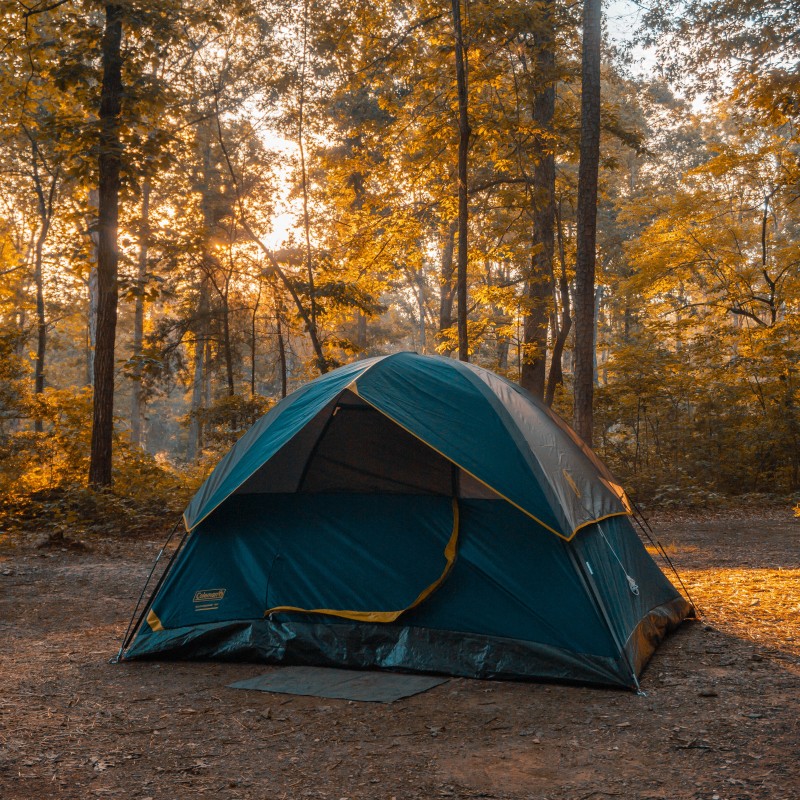
Materials
While selecting the ideal camping tent for your needs, material is a crucial factor to take into account.
Polyester is less enduring than other fabrics yet is lightweight and waterproof. Due to its strength, longevity, water resistance, and UV protection, nylon is a preferred material.
While canvas is a heavier cloth, it is durable and offers decent insulation, although it is less water resistant. Especially if you intend to use the tent frequently, the material’s longevity is crucial.
Particularly if you intend to carry the tent on hiking excursions, you should take into account its weight. Lastly, it’s crucial to pick a material that will keep you dry and comfortable in inclement weather.
Polyester
Polyester is a common material used in the manufacture of camping tents due to its durability, economy, and water resistance. It is a synthetic fabric made of woven plastic fibers that is strong, durable, hard-wearing, and tearing-resistant.
Furthermore, polyester is UV resistant and does not absorb water, which helps to keep campers dry inside the tent during rainy weather. It is lightweight and portable, making it ideal for backpackers who need to transport camping gear over long distances.
However, polyester is not as breathable as other fabrics; it retains heat and has good heat resistance, which can lead to condensation inside the tent.
Overall, polyester is a versatile and dependable material that is appropriate for a wide range of camping environments.
Nylon
Scientifically known as polyamide fibre, nylon is a common material used in the manufacture of camping tents due to its durability, strength and lightness.
It is known for its excellent water and abrasion resistance, making it ideal for camping in rainy or windy conditions. Nylon tents dry quickly and are easy to clean, making them a low-maintenance choice for camping.
Nylon fibres offer better performance than polyester in terms of flexibility, elastic recovery rate, abrasion resistance, alkali resistance, moisture absorption and lightness.
However, nylon does not breathe as well as other materials, which can lead to condensation in the tent. In addition, it is not as resistant to UV radiation as polyester, so it may fade and degrade more easily if exposed to the sun for long periods of time.
Canvas
Canvas is a thicker and thicker cotton or linen fabric, named after its original use in sails. It is usually made in plain weave, with a small amount of twill, and the warp and weft yarns are made with multiple strands.
Canvas is usually divided into two categories: coarse canvas and fine canvas.
Coarse canvas, also known as canopy cloth, has good waterproofing properties and is strong and durable, used for car transport and open-air warehouse coverings as well as field tents. It is made from cotton or a cotton-polyester blend and is treated with a waterproof coating to better protect against moisture.
Canvas tents are known for their durability and are often used in harsh weather conditions due to their high resistance to wind, rain and snow. They are also breathable, allowing air to circulate freely, which helps to prevent condensation inside the tent.
However, canvas tents are heavier and bulkier than other materials, making them less suitable for backpacking or trekking where portability is essential. They also require more maintenance, such as cleaning and re-waterproofing, to keep them in good condition.
Durability, Weight, and Weather-Resistance
When choosing a camping tent, durability, weight, and weather resistance are all important factors to consider.
A long-lasting tent will save you money and time while providing you with peace of mind in harsh outdoor conditions. The weight of the tent is also important, particularly if you’re backpacking or hiking because you want a lightweight tent that won’t add too much weight to your gear.
Furthermore, weather resistance is essential, especially if you’re camping in harsh weather conditions. A windproof and waterproof tent will keep you dry and warm while shielding you from the elements.
Polyester and nylon are popular for their weather-resistant properties, whereas canvas tents are more durable but heavier.
Ultimately, finding a balance between durability, weight, and weather-resistance is critical for selecting the right camping tent that meets your needs and ensures a comfortable and enjoyable outdoor experience.
Features to Look For
Choosing the ideal camping tent requires taking into account several essential features.
Tent size is crucial, depending on the number of occupants and equipment. Tent shape is another consideration, with dome-shaped tents being more stable in windy conditions, while cabin-style tents offer more interior space.
Ventilation is vital for reducing condensation, and a rainfly provides an extra layer of insulation. A vestibule offers storage space, while a gear loft helps to keep gear and clothing organized.
Other important features include interior pockets, reflective guy lines, and hooks for lanterns.
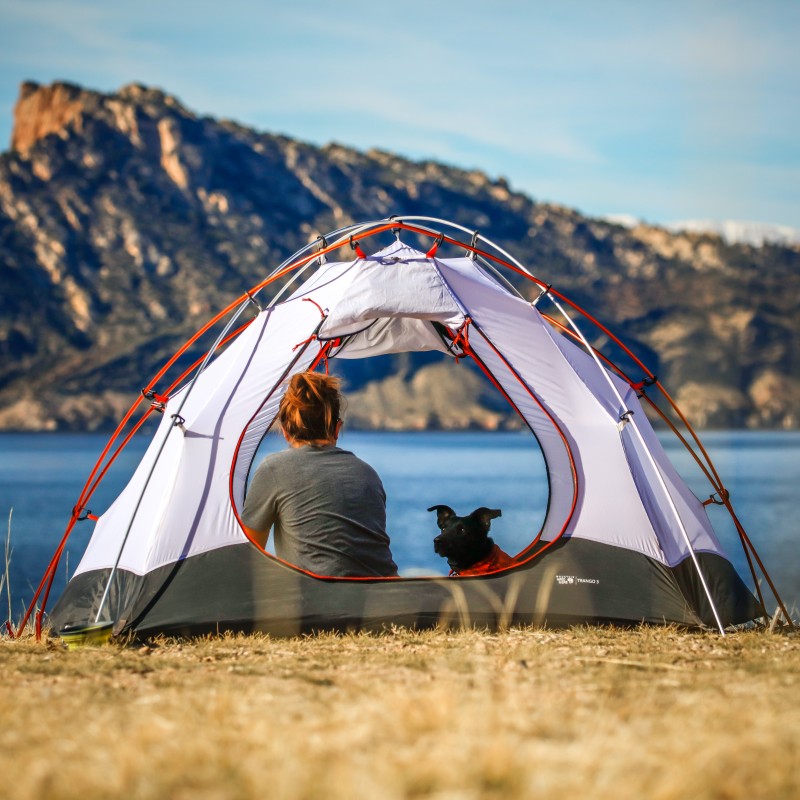
Tent Size
When deciding on the right tent size, keep in mind how many people will be sleeping in it and how much equipment you will be bringing with you.
Most tents have a maximum occupancy label, but keep in mind that this is usually the number of people who can sleep in the tent without any equipment.
If you have a lot of equipment, it is best to choose a tent that is one or two sizes larger than you actually need to ensure that everyone and everything has enough room.
Also, if you intend to spend a significant amount of time in the tent, such as during prolonged periods of rain or wind, you may need to select a larger size.
Tent Shape
Tent shape is an important consideration when choosing a tent. The most common tent shapes are domes, huts and tunnels.
Dome tents have a curved, dome-like shape and are usually freestanding. They offer good stability and wind resistance and are a popular choice for backpackers and campers.
Hut tents are more vertical in design with straight walls and flat roofs. They offer more headroom and living space than dome tents, making them a great choice for families and groups.
However, they may not be as stable in high winds. Tunnel tents are long and narrow in shape and are often used for mountaineering and expeditions.
They are lightweight and aerodynamic, but may not offer as much headroom or living space as a dome or cabin tent.
Ultimately, the best tent shape for you will depend on your specific needs and preferences.
Ventilation
Proper ventilation is an essential feature of a good tent. It helps to reduce condensation, keeps the air inside the tent fresh and reduces the risk of mold growth and unpleasant odors.
Tents with adequate ventilation come with mesh panels or windows that can be opened or closed as needed to regulate airflow.
Look for tents with multiple vents, especially on the roof, so that hot air can be pulled out of the tent on warm days. Some tents also have adjustable vents which can be positioned to control the direction of airflow.
Overall, proper ventilation is essential for a comfortable and healthy camping experience.
Rainfly
A rainfly is a fabric structure that protects your tent from the elements. It is an important part of the tent, providing an additional layer of protection from rain, wind, and other elements.
There would be no way to keep water out and the contents dry without it. It is a waterproof cover that fits over the body of the tent and acts as an additional barrier to keep the interior dry in the event of a rainstorm.
A good rainfly should cover the entire body of the tent, with no gaps for water to enter, and should have adequate ventilation to prevent condensation inside.
Porches are also available on some rainflys to provide extra storage space outside the tent while keeping equipment dry.
Overall, a good rainfly is essential for a comfortable and dry camping experience, especially in wet and stormy weather.
Vestibule
The vestibule is a small room leading into a larger space such as a lobby, foyer or corridor for the purpose of waiting, retaining a larger view of the space, reducing heat dissipation, providing storage space for outdoor clothing, etc.
The vestibule is an additional enclosed space, usually attached to the entrance of the tent. It acts as a place to store gear or change muddy or wet clothes before entering the main living space of the tent.
Vestibules can range in size from a small overhang to a fully enclosed space with a zipped entrance. Some larger tents may have multiple vestibules, providing more storage space and privacy.
The use of a vestibule helps to keep the main living space of the tent neat and organized, while also providing an extra layer of protection against inclement weather.
Gear Loft
The gear loft is a useful addition to your tent, providing additional storage space for your gear. It is an area within some camping tents that provides space to store lightweight items.
A gear loft is usually a small nylon mesh surface that hooks into the tent and hangs above where you sleep. This helps to keep your gear off the ground and off the road, freeing up floor space inside the tent.
Gear lofts are often used to store smaller items such as torches, books and clothes. Some models are even equipped with a multi-gear loft for added convenience.
Overall, a gear loft is a handy feature to make your camping experience more organized and comfortable.
Other Important Features
Tents can have a variety of additional features that make them more comfortable and practical for camping.
A footprint is a groundsheet designed to fit underneath the tent to protect it from wear and tear. A gear loft, which is a suspended mesh shelf inside the tent where campers can store their gear and keep it off the ground, is another useful feature.
Some tents also include built-in lightings, such as LED lights powered by batteries or a USB port. Storage pockets, guy lines, and reflective details for increased visibility at night are also desirable.
Choosing the right tent with the right features can make camping trips more enjoyable and less stressful.
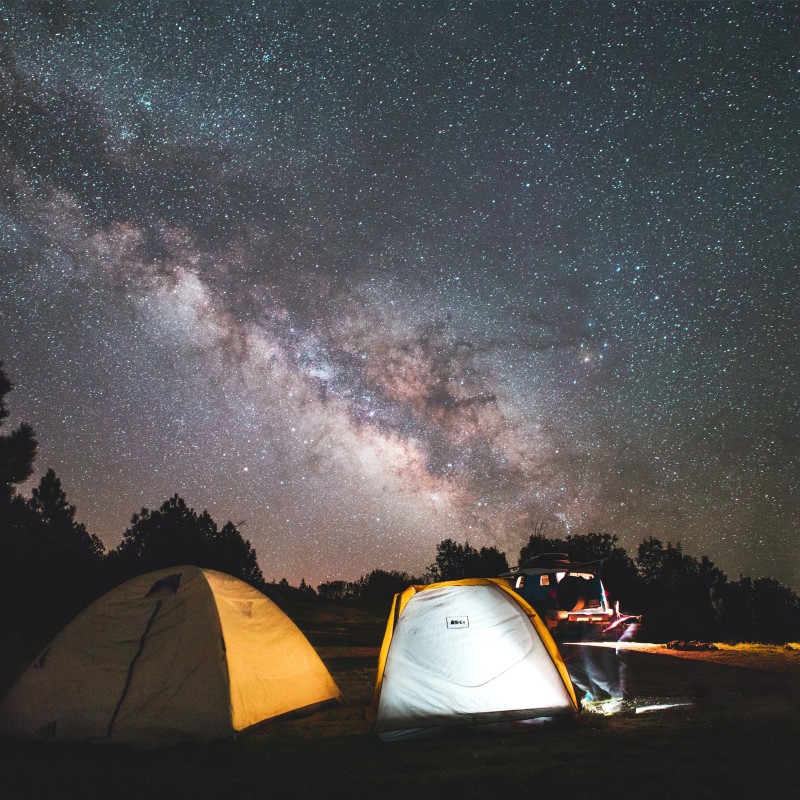
Setting Up and Maintaining Your Tent
Setting up and maintaining your camping tent is crucial for a comfortable and enjoyable camping experience. Essential tips for setting up your tent include choosing a flat, dry, and sheltered spot, avoiding rocky or uneven terrain, and setting up the rainfly correctly.
It’s also essential to maintain your tent for long-lasting use by keeping it clean, drying it thoroughly before packing it away, and patching any holes or tears immediately.
Additionally, storing your tent properly in a cool, dry, and dark place will help to extend its lifespan.
Essential tips for setting up your tent
Setting up a tent can be difficult, especially for beginners. However, with the proper techniques and practice, it can be a simple and enjoyable process. To begin, choose a flat, level surface for your tent and remove any debris or sharp objects that could damage it. Second, before beginning assembly, make sure to lay out your tent and all of the necessary components. Next, attach the rainfly to the tent body, making sure it is tightly secured to prevent water from seeping in. Finally, stake down the tent and guy lines properly to ensure stability in windy conditions. It’s also worth noting that practicing setting up your tent before your trip can save you time and stress on the actual camping trip.
Maintaining your tent for long-lasting use
Maintaining your tent is critical to ensuring its longevity. It’s critical to clean your tent after each camping trip to avoid mold, mildew, and dirt buildup, which can damage the fabric over time. Shake out any loose dirt and debris before wiping down the exterior with a damp cloth and mild soap. Avoid using abrasive or harsh chemicals that can damage the fabric or waterproof coating. To prevent mold and mildew growth, thoroughly dry your tent before storing it. Furthermore, to avoid damage or deterioration of the fabric or waterproof coating, store your tent in a cool, dry place away from direct sunlight. Regular maintenance and proper storage can help your tent last longer, ensuring that it continues to provide shelter and comfort on future camping trips.
Conclusion
In summary, finding the perfect camping tent requires careful consideration of a variety of factors including size, shape, materials, ventilation, canopies, foyers, equipping lofts and other features.
It is important to choose a tent that meets your specific needs and preferences in terms of durability, weather resistance, weight, and ease of set-up. Proper maintenance of your tent is also essential to ensure its long-term use.
By following the essential tips and guidelines outlined in this comprehensive guide, you can make informed decisions and enjoy a comfortable and enjoyable camping experience.
Whether you are an experienced camper or a new outdoor enthusiast, a good quality tent is a great investment for your next adventure.
Choosing the best camping tent for your next outdoor adventure can be difficult, but with the right information, it will be an enjoyable experience.
This guide provides a comprehensive overview of the key factors to consider when buying a camping tent, such as size, shape, materials and other features such as ventilation, doorways, and canopies.
It also provides useful advice on how to set up and maintain your tent for long-term use. Armed with this knowledge, you can go about your next camping trip with the confidence that you have chosen the best tent for your needs.
So, go on an outdoor adventure with your new camping buddy!
